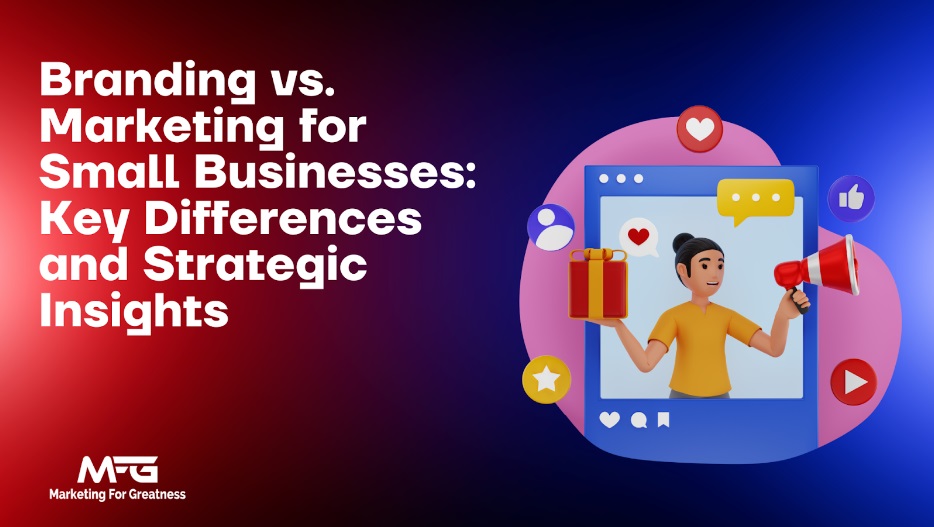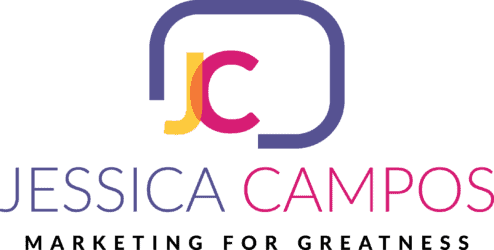Branding vs. Marketing for Small Businesses: Key Differences and Strategic Insights
Today, I want to chat with you about two essential terms that you’ve probably heard a million times: branding and marketing. They’re kind of like fraternal twins in the business world—they’re related and share some traits, but they’re not identical. So, let’s unpack each one and see how they can play nicely together to help your business shine.
Branding: Who Are You Really?
Think of branding as your business’s personality. It’s all about who you are, what you stand for, and how you want the world to see you. Your business name, logo, colors, and the tone of voice you use—all these things create your brand. It’s like the face you present to the world.
Why is branding so important, especially for small businesses like yours? Because it helps you stand out from the crowd. It’s how your customers remember you and why they stay loyal. It’s like your secret sauce!
Take “BeanBrew,” a local coffee shop. They’re not just about caffeine fixes. Their brand is all about creating a cozy community space, offering quality coffee, and being kind to the planet. This branding makes them a favorite among coffee lovers in their community.
Marketing: Let’s Get the Word Out
Now, if branding is the face of your business, marketing is how you introduce that face to the world. Marketing is all about shouting from the rooftops about your amazing products or services. It’s about knowing who your customers are, what they want, and how to get their attention.
Marketing is super important for small businesses. It’s how you attract new customers and keep the existing ones coming back. It’s your ticket to business growth.
Branding vs. Marketing: What’s the Difference?
If you’re wondering how branding and marketing differ, think about it like this:
Branding is about creating your business’s identity, while marketing is about promoting that identity.
Branding is long-term, focusing on things like your reputation and customer loyalty. Marketing is more short-term, aiming for immediate goals like sales and lead generation.
Branding involves tasks like designing your logo and defining your mission. Marketing is about turning that brand vision into a living thing.
I’ve found that business owners “kind-of” know this topic, but they don’t really know it. And I can tell by asking one simple question: can you show me the branding campaigns you’ve outlined for the upcoming months?
Their answer: “what do you mean?”. They have thought about social media posts, newsletters, and possible articles for their blog. And while that is PART of what a marketing plan will have, that’s NOT ALL.
Let’s put it this way: every brand strategist is a marketer. But not every marketer is a brand strategist. And if you want to grow a business today, you need to level up your branding game.
What does a Brand Strategist do?
A Brand Strategist is responsible for the overall brand awareness of a company. They help create, manage and maintain branding through various strategies. They conduct extensive research and use data to develop branding that fits the company and market to create a positive image of the organization.
Brand Strategists can work for corporations or marketing agencies. An in-house Brand Strategist works with different departments and leaders to strengthen and maintain the organization’s branding. When working for an agency, a Brand Strategist works with different companies that come to the agency for help with their brand identity development and management. They meet with a company, develop branding and manage the branding or teach the company how to implement the branding strategies themselves.
When I was developing the Hispanic Market for Beachbody, my official title was “coach,” yet I played a significant role in their branding strategy team. My biggest challenge was figuring out how to sell a protein shake that cost five times more than a regular one. The company had some marketing materials in Spanish, but they didn’t genuinely reflect my culture.
I proposed a series of events, and they loved my idea. During that time, I was living in Connecticut and would often fly to San Juan to host these events. Reflecting on those times, I realize that from the inception of these events, Beachbody consistently ensured their brand was accurately represented. I incorporated my personality, as well as my team’s personality, into the mix. However, we always had to stay “on brand.”

Babak Azad, SVP, media & customer acquisition at Beachbody (the creators of P90X, Insanity and Shakeology), who helped the company acquire more than 10 million customers and eclipse $1 billion in sales, was interviewed in 2018 when Beachbody broke the news on hitting their billion dollar milestone. He said that what drove him to succeed was to focus on three areas — customer lifetime value, BRAND and operational excellence — can dramatically increase the chances of scalability and sustainability of a business. Source: Entrepreneur.
The creators of P90x and Shakeology turned Beachbody into one of the most powerful fitness brands in the world. Beachbody just rebranded as BODi. Their rebranding strategy kicked off with a marketing campaign announcing their health esteem movement.
What can business owners learn from Beachbody-now-BODi?
One crucial lesson that every business can glean from this success story is that branding serves as the fountain of youth for a business. Your products may change, your team can adapt and evolve, but a robust brand remains timeless.

My experience with Beachbody became the foundation of what I’ve done as an entrepreneur and business owner and what I do today for the brands we grow in our agency.
Branding and Marketing: Better Together
The real magic happens when branding and marketing come together.
Your brand guides your marketing efforts, helping you craft the right messages and choose the best channels to reach your customers. Meanwhile, your marketing helps spread the word about your brand, enhancing its image.
Imagine your brand as your business’s heart, pumping out your values and identity. Marketing is like the veins, carrying this identity to the world.
Without a brand, your marketing lacks focus. Without marketing, your brand stays hidden.
So there you have it! Now you know the difference between branding and marketing and why they’re both super important for your small business.
The next time you’re about to send a newsletter to your customers, think about their experience with your BRAND.
When you are sharing content on social media, think about how will your future customers FEEL about that content. Will they gain any value? Will they EXPERIENCE a particular feeling? What are the feelings that you want to project as a business?
Your brand is like a person! It has FEELINGS! And if you tap into the power of a strong brand strategy, the opportunities are endless!
Remember, your brand is the heart of your business, and marketing is how you let the world know you’re here.
And hey, if you ever want to chat with a brand strategist, I’m a click away. Book a call and let’s chat. I would be honored explore how far can your brand elevate your business.

